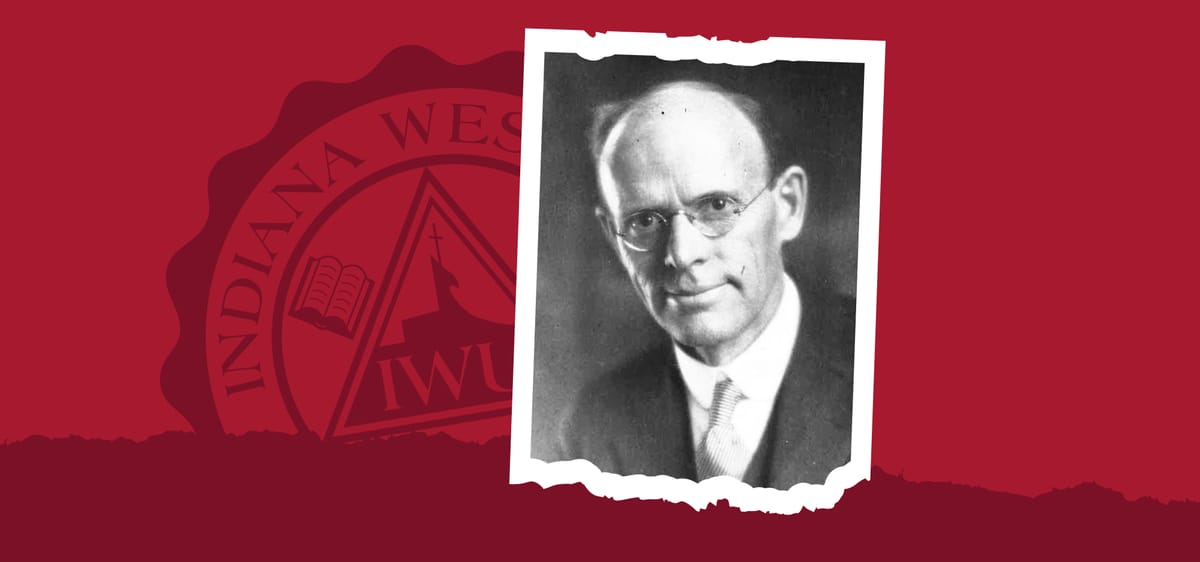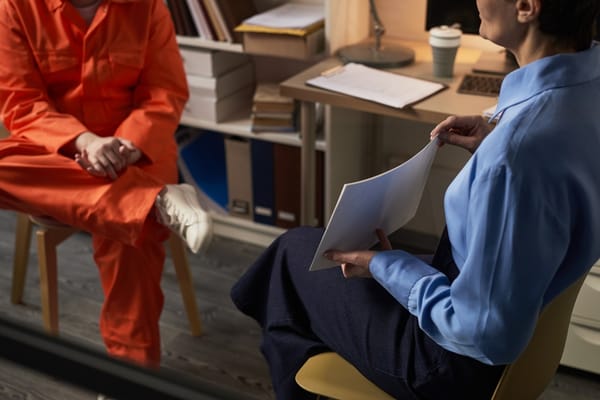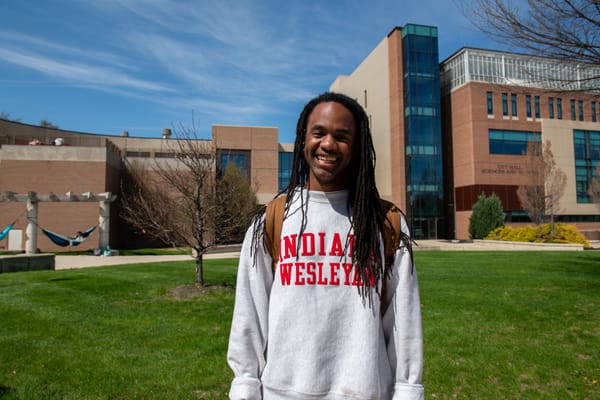Presidents of the Past—John W. Leedy (1922-1927)

A Complicated Legacy
John W. Leedy was one of the first professors to join Marion College when it opened. While not part of any of the previous colleges which called Marion, Indiana home, he was part of the Wesleyan Church, even getting the chance to speak at the Wesleyan Holiness Convention in 1921. Throughout the controversy regarding President Bedford and his supposed failures as a leader, Leedy remained quiet, no statements from him regarding the situation surviving anywhere. Regardless of what opinion he held, however, the fact he was named as the next presidential candidate in February of 1922 implies any favor he felt for Bedford was at least minor.
The following month, Leedy accepted the position. Professor A. Jones announced this to both the school and the wider community, with Leedy stating, “[I trust] that under the guidance of God I may be able to so administer the affairs of the college that it will be a blessing to a multitude of young people who may come under its care, a substantial aid to the church, and an honor to God.”
While the departure of President Bedford was still very much a sore wound for many, Leedy’s naming as successor was accepted well overall by everyone who decided to stay on at the college. In the first edition of The Marionette, Marion College’s yearbook, Leedy wrote, “Our education must not only be in knowledge, but in Godliness.” This concept became the defining mantra of Leedy’s institution, providing a vision for Marion College. “A man must not only be a businessman, but a Godly businessman;” Leedy explained, “he must not only be a Physician, a Lawyer, or a Teacher, but a Godly Physician, Lawyer, or Teacher.” Though his own field was biology, Leedy served as Dean of the Theological Department throughout his presidency.
Leedy came into the presidency with two decades of previous experience as a teacher, as well as experience working in school administration. His first year required him to hire several new faculty members to replace those who departed with Bedford, as well as requiring he work to facilitate peace and healing after the situation and its painful and unfortunate effects. Due to shifts made by the Wesleyan Church regarding the responsibilities of administrative offices, Leedy was given additional duties as president beyond those Bedford held.
Throughout his first year, President Leedy handled all these complex elements well while also working towards stronger recruitment strategies and higher enrollment. During the second half of the academic year, students finished a three-year project of raising the necessary funds to build a new gymnasium to replace the one which Marion College inherited from its predecessor. Given this was a student-led project, students helped with a sizable amount of the construction—helping lay the foundation, mixing mortar for the bricklayers, putting up roofing, and completing the landscaping themselves. By the end of 1923, Marion College included a brand new, completed gymnasium. At the completion of the project, Leedy stated, “This building… represents your faith in the worth and permanency of Marion College. This building is not a temporary makeshift; you built for future years and those who shall come after you.” While this gymnasium no longer stands, it persisted for many years even so, the accomplishments those students made standing as a monument to their dedication and love for their college.
President Leedy was also the first president to contribute to the Marion College Journal, helping to edit it and often writing pieces for it. In 1925, a unanimous decision determined the president should give the Baccalaureate sermon prior to graduation. Both of these became presidential traditions and duties, thanks in large part to Leedy’s willingness to do them.
Leedy spent the first several years of his presidency becoming the unifying and beloved president the college needed. For Leedy’s first several years as president he provided the same level of likability as Bedford without any of the same controversy. Given Marion College was still so young, stability was something it very much needed. Unfortunately, the few years of stability Leedy’s presidency was providing would not last and it would take several more years for true stability to arrive.
In 1926, Leedy used his role as president to purchase equipment for the laboratory using the school’s money without first applying for the funds or informing anyone. While this was not the worst potential offense, it still served as the first indication Leedy was becoming uninterested in financial accountability, preferring to spend the college’s money on his favorite areas and projects without consulting anyone else. As questions continued to grow about Leedy’s unauthorized use of the school’s money, controversy brewed, with varying perspectives and messages coming forward about how much of the college’s money Leedy was spending by himself. This culminated in two students writing about Leedy’s financial choices in a critical light, resulting in the president reacting by suspending them. Given this was not something he was allowed to do, however, the Board of Trustees requested Leedy reinstate the students, attempting to give him a chance to fix things, but instead Leedy doubled down, refusing to reinstate the students. Left with no other reasonable choice at this point and recognizing there was a serious problem, the Board reinstated the students themselves and suspended Leedy until further notice.
After this, a full investigation was launched by the General Conference into Leedy’s administration and the financial choices he made. While the first several years of his presidency encountered universal praise, the present issues resulted in the Conference deciding to investigate the entirety of his financial decisions throughout his entire presidency. This investigation concluded on July 27, 1927, and while the details of the investigation were not released, Leedy’s resignation from the office of president makes the results clear enough.
At the time of Leedy’s departure, Marion College was left facing an uncertain future. Security in administration was ripped away right as it returned and Leedy’s financial misuse placed the college on the verge of bankruptcy. While Leedy made many positive contributions as a professor and helped heal the school after Bedford’s controversial removal, the issues he caused for Marion College through his presidency left lasting consequences which were far worse than any of his positive effects. This leaves him in an unfortunate place as both one of Marion College’s first presidents and as one of its worst.
It is hard to know the exact reasons behind what happened, how someone so beloved as a professor and even as a president for several years could make such a drastic shift in personality and leave such a negative effect, but it is perhaps possible Leedy’s intense love for his favorite projects, increased responsibilities, tendency to take on more additional responsibilities than he needed to, and lack of experience managing finances all worked together in the worst combination possible, leading to the slow decline and souring of an otherwise promising presidency. As such, Leedy’s legacy was sullied before he even departed.
However, with the distance of a century from the presidency and the benefit of knowing how things would work out for the university, there is perhaps little point in focusing on Leedy’s many failures as a president and his negative effects and, if we are to remember him, it might be best to just remember his time as a professor during the college’s earliest years and the stability and positivity he brought to the college as president for a few years, even if those positive effects would prove fleeting.
Want to read more? Check out the other articles in the "President's of the Past" series!
- Henry C. Bedford (1919-1922)
- John W. Leedy (1922-1927)
- The Forgotten Presidents (1927-1932)
- William F. McConn (1932-1960)
- Woodrow I. Goodman (1960-1976)
- Robert R. Luckey (1976-1984, 1986-1987)
- James P. Hill Jr. (1984-1986)
- James B. Barnes (1987-2006)
- Henry L. Smith (2006-2013)
- David W. Wright (2013-2022)





